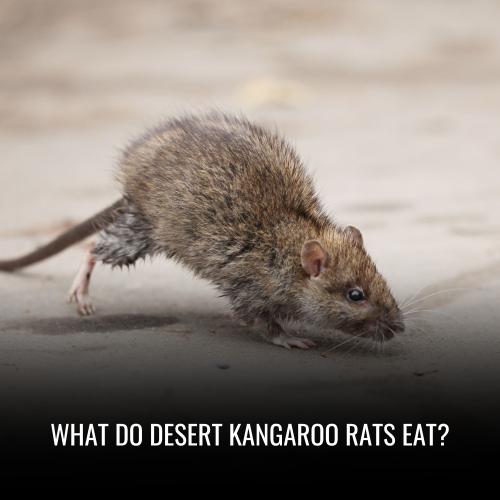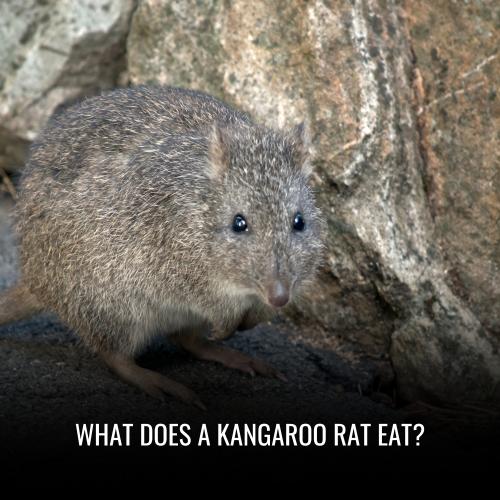What Do Desert Kangaroo Rats Eat?
Desert kangaroo rats primarily eat seeds, with a diet consisting mostly of mesquite beans and grass seeds. They also occasionally consume small insects. This diet of seeds and insects provides kangaroo rats with the necessary nutrients and energy to survive in their desert habitat.

Diet of Desert Kangaroo Rats
The diet of desert kangaroo rats plays a crucial role in their survival in arid and sandy ecosystems. These small, nocturnal rodents have developed specialized feeding behaviors and adaptations to thrive in environments with limited food resources.
By consuming a primarily herbivorous diet, desert kangaroo rats can extract hydration from the seeds and plants they consume, allowing them to minimize their water intake and efficiently conserve moisture.
Understanding the specific dietary habits of desert kangaroo rats sheds light on the intricate ways in which these animals have evolved to adapt to their harsh desert environments.
Primary food sources for Desert kangaroo rats
Kangaroo rats primarily feed on seeds and plant material in arid environments. They have selective feeding habits, often choosing seeds that are high in energy and low in moisture content. This allows them to obtain the necessary nutrients without having to consume large amounts of water, which is scarce in the desert. Kangaroo rats are able to extract metabolic water from the seeds they eat, which helps them stay hydrated in their dry habitat.
The primary food sources for kangaroo rats include a variety of desert plants such as creosote bush, mesquite, and various grasses. They rely on the seeds of these plants for their diet, as well as the occasional consumption of green vegetation. Their ability to efficiently utilize the limited water available in their food allows them to thrive in the harsh desert environments where they are found.
Do desert kangaroo rats consume insects or other animals?
No, desert kangaroo rats are predominantly herbivores, and their diet consists mainly of seeds, leaves, and plant material. They do not actively hunt or consume insects or other animals. Desert kangaroo rats have evolved specific adaptations to survive in their arid habitats.
One of these adaptations is their ability to extract hydration from the seeds and plants they consume, enabling them to conserve water efficiently. By primarily feeding on seeds with high energy content and low moisture levels, they can obtain the necessary nutrients without relying heavily on scarce water.
How do desert kangaroo rats survive in areas with limited water?
Desert kangaroo rats are well-adapted to arid conditions and can obtain sufficient moisture from the seeds they consume. They are also known for their ability to minimize water loss through metabolic adaptations, allowing them to thrive in environments with limited water sources.
Eating a primarily herbivorous diet, desert kangaroo rats have developed specialized feeding behaviors and adaptations to survive in arid and sandy ecosystems. This small, nocturnal rodent has intricately evolved to adapt to its harsh desert environment by consuming seeds and plant material.
Are there specific plants that desert kangaroo rats prefer?
Yes, desert kangaroo rats exhibit preferences for the seeds of certain desert plants, including grasses, creosote bushes, and various shrubs. The type of vegetation in their habitat plays a crucial role in shaping their dietary choices.
The dietary preferences of desert kangaroo rats are shaped by the availability of vegetation in their habitat. These small rodents exhibit selectivity when it comes to choosing their food sources. While they primarily consume seeds, desert kangaroo rats also incorporate green vegetation into their diet on occasion.
Do desert kangaroo rats store food for later consumption?
Yes, desert kangaroo rats are known for their remarkable ability to hoard seeds. They use cheek pouches to transport seeds to their burrows, where they create caches for later consumption. This storage mechanism helps them survive periods of food scarcity.
How often do desert kangaroo rats need to eat to sustain themselves?
Desert kangaroo rats are nocturnal and have adapted to consume small, frequent meals. They may feed multiple times during the night, relying on their efficient metabolism and food-storing behavior to sustain themselves in the challenging desert environment.
FAQs
Desert kangaroo rats primarily feed on seeds, particularly those from grasses and other desert plants. Seeds are a crucial component of their diet and serve as a primary source of nutrition.
While seeds make up the majority of their diet, desert kangaroo rats are omnivores and may consume insects and small animals on occasion. However, the bulk of their nutrition is derived from seeds and vegetation.
Desert kangaroo rats are adapted to arid environments and forage for seeds on the desert floor. They are skilled at locating and collecting seeds from various desert plants, exhibiting a specialized behavior to gather and store their food efficiently.
Desert kangaroo rats exhibit preferences for certain types of seeds, favoring those with higher nutritional content. They often consume seeds from grasses, annual plants, and other desert vegetation, adapting their diet based on what is available in their habitat.
Yes, desert kangaroo rats play a vital ecological role by serving as seed dispersers. As they forage for seeds, they inadvertently scatter them across the desert landscape. This behavior contributes to the dispersal and germination of plants, impacting the overall biodiversity of their ecosystem.
Desert kangaroo rats primarily feed on seeds, particularly those from grasses and other desert plants. Their diet is highly specialized, focusing on seeds with low moisture content to minimize their water requirements.
Conclusion:
The diet of desert kangaroo rats is truly fascinating. From their ability to obtain all their water from their food to their preference for seeds and succulent plants, these resilient creatures have adapted to survive in the harsh desert environment.
So, the next time you visit the desert, keep an eye out for these adorable little rodents and marvel at their unique eating habits.

